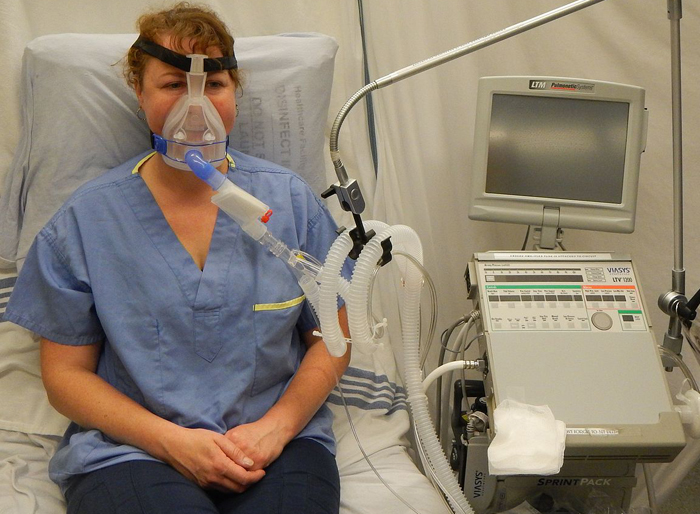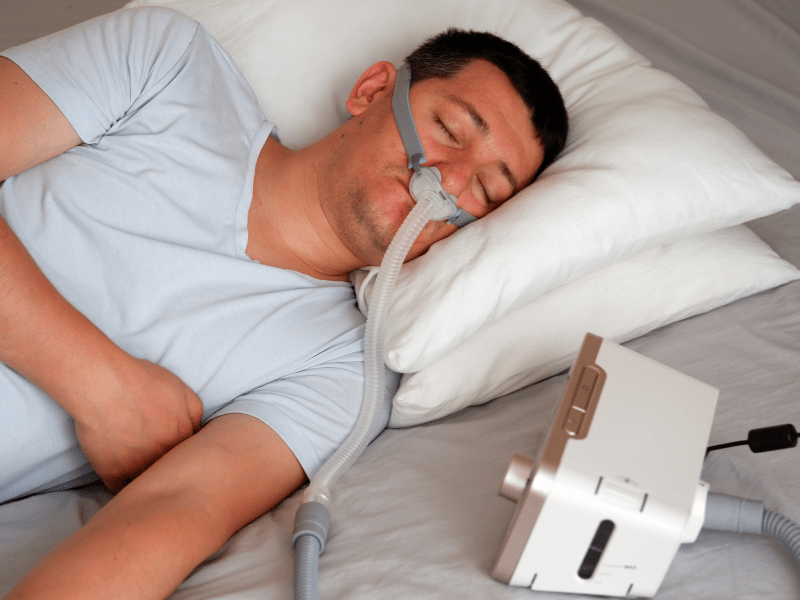Conserve Cash with Convenient BiPAP Rental Strategies
Conserve Cash with Convenient BiPAP Rental Strategies
Blog Article
Bipap vs. CPAP: Which Is the Finest for Your Rest Disorder?
When navigating the complexities of rest conditions, the option in between BiPAP and CPAP therapy is a critical factor to consider. Each technique supplies distinct advantages tailored to specific problems, yet the choice depends upon private client needs and comfort levels. While CPAP supplies a constant air movement appropriate for obstructive rest apnea, BiPAP's twin pressure setups may enhance convenience for those with even more detailed respiratory concerns. Understanding these differences can dramatically affect therapy efficacy, leaving one to consider which option absolutely lines up with their wellness requirements and way of life.
Understanding Rest Disorders
Sleep problems encompass a range of problems that interrupt typical sleep patterns, impacting both the top quality and period of rest. These problems can show up in different forms, including sleep problems, sleep apnea, narcolepsy, troubled leg disorder, and parasomnias. Each condition presents special difficulties, commonly resulting in considerable daytime exhaustion, cognitive disability, and emotional disturbances.
Sleeping disorders is characterized by problem falling or staying asleep, while rest apnea includes duplicated disruptions in breathing during sleep, typically causing fragmented rest. Narcolepsy, on the other hand, is noted by too much daytime drowsiness and sudden rest assaults. Uneasy leg syndrome causes uncomfortable sensations in the legs, prompting an irrepressible desire to relocate them, which can additionally impede the capability to go to sleep.
The influence of rest problems expands beyond individual health, influencing general productivity, connections, and lifestyle. Recognizing the certain nature of each condition is essential for effective medical diagnosis and therapy. As rest wellness ends up being significantly identified as an important element of total wellness, dealing with these disorders is important for enhancing both sleep high quality and everyday functioning.
Exactly How CPAP Functions
Continuous Favorable Respiratory Tract Pressure (CPAP) therapy is often employed as a primary treatment for obstructive sleep apnea (OSA) The system of CPAP entails the usage of an equipment that supplies a consistent stream of air via a mask put on throughout rest. This airflow preserves favorable stress in the airway, avoiding the collapse or obstruction of the throat that can happen during rest.
When an individual inhales, the CPAP machine offers a constant circulation of air, making sure that the airway stays open - BiPAP Rental. This not just alleviates the symptoms of OSA, such as snoring and interrupted sleep patterns, yet likewise decreases the associated health and wellness dangers, consisting of cardio complications and daytime exhaustion
The pressure setups on a CPAP equipment can be personalized to satisfy specific patient demands, usually figured out via a sleep research. Overall, CPAP therapy has been revealed to significantly boost the quality of sleep and overall health for people experiencing from obstructive sleep apnea.
Exactly How BiPAP Works
BiPAP, or Bilevel Positive Respiratory Tract Pressure, is a specific form of non-invasive air flow that is especially advantageous for people with conditions such as complicated rest apnea or breathing conditions. Unlike CPAP, which supplies a continuous stream of air at a single pressure, BiPAP supplies two distinct stress setups: a higher inspiratory pressure for breathing and a reduced expiratory stress for exhalation. This dual-pressure technique allows for less complicated breathing, lowering the effort called for during exhalation.
The device operates via a mask fitted over the nose or mouth, connected to an equipment that creates atmospheric pressure. When the patient inhales, the maker provides the greater pressure to assist with airflow, guaranteeing that the air passage continues to be open. Upon exhalation, the equipment automatically lowers the pressure, making it more comfy for the person to breathe out.

Trick Distinctions In Between BiPAP and CPAP

In contrast, BiPAP (Bilevel Positive Airway Pressure) offers two different pressure setups: one for breathing and a reduced one for exhalation. This twin stress system anchor permits more comfy breathing, particularly for people who battle with breathing out versus a continual pressure. BiPAP is often suggested for people with complex sleep apnea, persistent obstructive lung disease (COPD), or those who require added support during rest.
Moreover, the complexity of BiPAP devices commonly leads to a greater expense and calls for much more mindful titration than CPAP. BiPAP Rental. Recognizing these vital differences can help in acknowledging which device may be a lot more appropriate for particular rest conditions, establishing the foundation for educated treatment decisions
Picking the Right Treatment
How can one determine the most appropriate treatment for handling rest problems? The decision in between BiPAP and CPAP treatment mainly pivots on the details characteristics of the sleep disorder, the client's total health, and their comfort with the device. CPAP, which provides a continuous stream of air, is frequently recommended for obstructive rest apnea (OSA) It keeps an open airway during rest, properly protecting against apneas and hypopneas.
Conversely, BiPAP gives two degrees of stress: one for inhalation and a lower one for exhalation. This double stress system is helpful for clients with complex rest apnea or those who experience difficulty exhaling versus a continual stress. Additionally, BiPAP is often advised for people with respiratory problems, such as persistent obstructive lung illness (COPD), where differing pressure settings can improve comfort and conformity.
Ultimately, a thorough analysis by a sleep professional, consisting of a rest Find Out More research study, can help determine which treatment aligns best with the individual's demands. Aspects such as convenience, simplicity of use, and particular medical conditions must additionally be taken into account to maximize treatment outcomes.
Verdict
In summary, both BiPAP and CPAP serve distinct purposes in the management of rest problems. CPAP works for obstructive sleep apnea via constant air flow, while BiPAP provides double pressure settings that enhance comfort for those with intricate sleep apnea or respiratory system concerns. The option in between these treatments ought to be guided by specific needs and conditions, necessitating a thorough analysis by a sleep expert to ensure ideal therapy end results and boosted high quality of sleep.

On the whole, CPAP therapy has been shown to substantially improve the high quality of sleep and overall health and wellness for individuals enduring from obstructive sleep apnea.
BiPAP is frequently recommended for individuals with complicated rest apnea, chronic obstructive pulmonary disease (COPD), or those that call for additional assistance throughout sleep.
CPAP is reliable for obstructive sleep apnea with regular air flow, while BiPAP uses double pressure setups that improve convenience for those with intricate rest apnea or respiratory problems.
Report this page